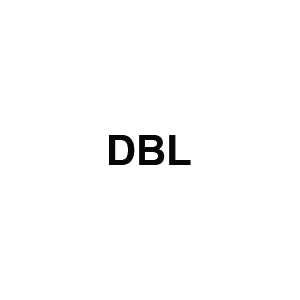Description
Introduction
Scala is a powerful programming language that blends functional and object-oriented programming paradigms. Its concise syntax, immutability, and higher-order functions make it a great choice for backend development. Scala is often used for building highly scalable, performant, and concurrent systems, especially when combined with frameworks like Akka and Play. This guide provides an introduction to using Scala for backend development, covering essential tools, frameworks, and patterns to build efficient, scalable backend applications.
Prerequisites
- Basic understanding of programming concepts, especially functional and object-oriented programming.
- Familiarity with Java and JVM-based languages (helpful but not required).
- Understanding of RESTful APIs and HTTP concepts.
- Knowledge of databases, web servers, and backend architecture.
- A development environment with Scala and SBT (Scala Build Tool) installed.
Table of Contents
- Introduction to Scala for Backend Development
1.1 What Makes Scala Suitable for Backend Development?
1.2 Scala’s JVM Advantage and Ecosystem
1.3 Key Features of Scala for Backend Developers
1.4 Getting Started: Setting Up Scala for Backend Projects - Functional Programming in Scala for Backend Systems
2.1 The Role of Functional Programming in Backend Development
2.2 Pure Functions and Immutability in Backend Systems
2.3 Higher-Order Functions for Composability(Ref: Getting Started with Onyx: An Introductory Workshop)
2.4 Option, Either, and Future for Error Handling and Concurrency
2.5 Monads and Functors for Clean Code in Backend Systems - Building RESTful APIs with Scala
3.1 Overview of RESTful APIs and HTTP Concepts
3.2 Setting Up a Scala Project for API Development
3.3 Using Play Framework for Building REST APIs
3.4 HTTP Methods, Routing, and Response Handling in Play
3.5 JSON Serialization/Deserialization with Play JSON and Circe
3.6 Testing REST APIs with ScalaTest and Specs2 - Akka for Concurrent and Distributed Backend Systems
4.1 What is Akka?
4.2 Akka Actors for Concurrency and Parallelism
4.3 Designing Asynchronous and Non-blocking Systems with Akka
4.4 Akka Streams for Handling Large-Scale Data Processing
4.5 Integrating Akka with Other Backend Components
4.6 Monitoring and Managing Akka-Based Systems - Database Interaction in Scala
5.1 Overview of Database Integration in Scala
5.2 Working with Relational Databases Using Slick
5.3 Using Doobie for Functional Database Interaction
5.4 Accessing NoSQL Databases (e.g., MongoDB, Cassandra) in Scala
5.5 Advanced Querying and Transaction Management in Scala
5.6 ORM Alternatives in Scala: Pros and Cons - Building Microservices with Scala
6.1 Understanding Microservice Architecture
6.2 Building Scalable Microservices with Scala and Akka
6.3 Using HTTP and gRPC for Microservices Communication
6.4 Managing Microservice Communication with Akka HTTP
6.5 Securing Microservices with OAuth2 and JWT
6.6 Deploying and Scaling Microservices with Docker and Kubernetes - Dependency Injection and Modularity in Scala
7.1 The Role of Dependency Injection in Backend Development
7.2 Using MacWire for Dependency Injection in Scala
7.3 Implementing Modularity with Scala’s Traits and Mixins
7.4 Akka Dependency Injection: Integrating with Akka Actors
7.5 Best Practices for Dependency Management in Scala Projects - Performance Optimization in Scala Backend Systems
8.1 Understanding Performance Bottlenecks in Backend Systems
8.2 Memory Management and Garbage Collection in Scala
8.3 Profiling and Benchmarking Scala Applications
8.4 Parallelism and Concurrency Optimization in Scala
8.5 Best Practices for Writing Efficient Scala Code - Security Considerations in Scala Backend Development
9.1 Overview of Common Security Threats in Backend Systems
9.2 Implementing Secure Authentication and Authorization in Scala
9.3 Using HTTPS and SSL/TLS for Secure Communication
9.4 Securing APIs with API Keys, OAuth2, and JWT
9.5 Preventing SQL Injection and Cross-Site Scripting (XSS) in Scala APIs
9.6 Security Best Practices for Scala Backend Applications - Testing and Debugging Scala Backend Applications
10.1 Importance of Testing in Backend Development(Ref: Performance Testing with JMeter: Ensuring Web Application Scalability)
10.2 Unit Testing in Scala with ScalaTest and Specs2
10.3 Integration Testing for REST APIs and Akka Systems
10.4 Using Mocking and Stubbing in Scala Testing
10.5 Debugging Techniques for Scala Backend Applications - Deployment and CI/CD for Scala Backend Applications
11.1 Introduction to Continuous Integration and Continuous Deployment (CI/CD)
11.2 Setting Up CI/CD Pipelines for Scala Projects
11.3 Deploying Scala Applications to Cloud Providers (e.g., AWS, GCP)
11.4 Using Docker for Containerized Scala Applications
11.5 Scaling and Managing Backend Applications with Kubernetes - Best Practices for Scala Backend Development
12.1 Structuring and Organizing Scala Projects
12.2 Managing Dependencies and Build Tools in Scala
12.3 Code Quality: Using Scalastyle and Scalafmt
12.4 Optimizing and Profiling Scala Backend Systems
12.5 Maintaining and Refactoring Scala Backend Code - Conclusion and Future Trends
13.1 Recap of Key Concepts in Scala Backend Development
13.2 Future Trends: Serverless Architectures and Functional Programming
13.3 Further Learning Resources for Scala Backend Development
13.4 Final Thoughts on Building Modern Backend Systems with Scala
Conclusion
Scala offers powerful features for backend development, enabling developers to build highly scalable, functional, and concurrent systems. By utilizing frameworks like Play for REST APIs, Akka for concurrency, and tools like Slick for database interactions, Scala provides an excellent foundation for modern backend applications. Following best practices in performance optimization, security, testing, and CI/CD ensures that Scala-based backend systems are robust and maintainable. With the growing adoption of microservices, distributed systems, and cloud computing, Scala remains a top choice for backend development, particularly for high-performance, large-scale applications.







Reviews
There are no reviews yet.